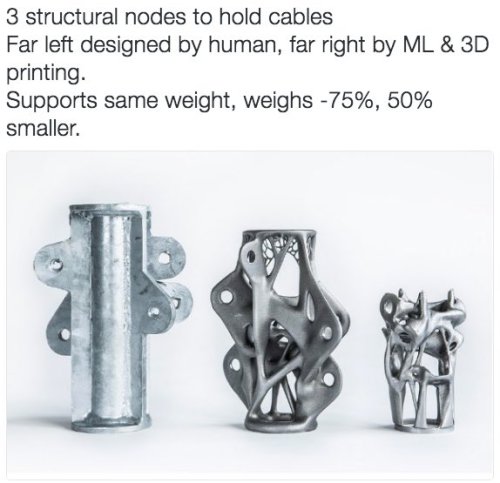Here’s something that popped into my head recently, and seems worthy of a blog post, to see what comes back…
We’re using machine learning for all the wrong things, as I write about extensively in Ways of Being: to make things that beat us at games, deplete the planets resources more efficiently, confuse images and art, and so on and on. What we need are intelligences that help us do useful things in new and better ways, ways which we could not have imagined alone. AIs which are colleagues and collaborators, rather than slaves and masters.
Here’s one idea: an optimisation engine for woodworking: an AI Carpenter – except that the human is the carpenter, AI is the planner / assistant. (Gepetto? Jiminy Crickett? Kricket, like in Douglas Adams. They could have carved a Wicket and Bails.)
Given the dimensions of some wood – or even of a tree – but preferably a bunch of surplus or recycled wood, whatever materials and shapes and planes you have lying around, and a sketch of the desired structure, the machine outputs a complete guide/spec for building.
Where it gets interesting is when you see it doing some of the deeply weird stuff AI is really good at, optimising for strength and structure no human would conceive of, like (via):

A non-human understanding of grain, lignin, knots, and bark, of joints, pressure, loads. Structural properties in new configurations
It could get into wooden pegs and joints, no nails, like Japanese carpentry – if Japanese carpentry were performed a thousand years from now, on Mars.
What are the steps? (Not necessarily in this order)
– Understanding the sketch/needs
– Evolving and optimising a design
– Matching with available materials
Is this being done with anything? Feels very Walkaway. Not a Universal fabber, but a scarcity one. All the machine 3d printing fabrication stuff seems to be focussed on things that humans are already good at – or can learn – and on weird, expensive, complex materials which are hard to obtain and work with.
What we need from machines is things we’re not very good at. Planning, optimisation, novel strategy. New ways of thinking about problems. Pushing the problem space in strange, novel directions, but making solutions which are affordable, sustainable, educative and generative.
Also: machine learning at the grain of human craft. An AI optimised not for precision, but for hand-tooling. Not for CNC-levels of fit, but for Segal affordances and tolerances. A tolerant AI. A colleague in the wood shop. Hammer time.
[…] The AI and the Tree (booktwo.org): James Bridle considers a shift in perception of AI from servant to colleague. […]
Pingback by In pursuit of intuitive interfaces ? doing.digital — May 25, 2022 @ 4:58 pm